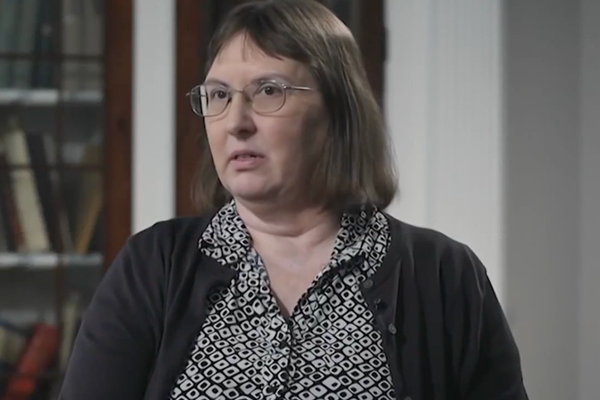
If your next car could put the brakes on your power and petrol bills, would you let it?
That's the promise of vehicle-to-grid technology that has long been tipped for launch in Australia and was finally approved for use in homes and with the national grid late in 2024.
Only two car brands are ready to use the technology so far, but more options are tipped to launch within months.
The innovation could change the way people look at vehicles, say automotive experts who also warn it has been sold to consumers in the wrong way and could be more attractive than they expect.
Vehicle-to-grid technology, also known as V2G, is designed to connect an electric car to the electricity grid using a bi-directional charger.
With this equipment, compatible vehicles can draw energy from solar panels or the electricity network to charge during the day but they can also feed energy back into the grid or power a household when needed.
A V2G study conducted for the Australian Renewable Energy Agency found with the right settings, electric vehicle owners could earn as much as $12,000 a year by selling energy back to the grid.

Not everyone agrees that this is the right way to sell electric car owners on the technology, however, including Jet Charge chief executive Tim Washington who has been pursuing the technology for more than three years.
While it is possible to turn a car's battery into a money spinner using V2G technology, he says most Australians will use it to power their own homes and significantly cut their power bills.
"For the vast majority of people, the message should be 'you can spend no money on electricity' rather than 'you can have a side-hustle'," he told AAP.
"The main goal is to bring down transport and energy costs for people as much as possible ... and there is the opportunity to not only make transportation fuel free but to make household electricity free if you have a big enough solar system."
Jet Charge has provided bi-directional chargers from Europe to test V2G technology in the only state where it was allowed until recently, South Australia, as well as for a pilot in Canberra.
But the laws around the technology changed in November last year, when Energy Minister Chris Bowen announced a standard for bi-directional chargers that would be overseen by the Clean Energy Council.
The first Australia-ready V2G chargers using standard, CCS type 2 connections should be approved and ready for use in the second half of the year, Mr Washington says, and while they may trigger a trickle of sales, that would quickly turn into "a massive flood".
"People will start thinking about their vehicles as both transport and energy assets, and sales will gravitate towards vehicles that are capable of being used as ... batteries for your home," he said.
"Within the next five to eight years, people's perceptions of what a vehicle is will start changing, especially if they have access to off-street parking."

Electric car makers could invest in the technology to boost sales, which remained flat in several countries during 2024 and fell in Australia at the start of 2025.
Motorists purchased fewer than 4000 electric cars during January, according to the Federal Chamber of Automotive Industries and Electric Vehicle Council, compared to more than 8300 in December.
Vehicle-to-grid technology could be the thing to reverse the trend if consumers see extra value in buying a battery-powered vehicle rather than a hybrid car, V2Grid Australia co-founder Matthew Downie said.
His South Australian company recently collaborated with Mitsubishi to create a bi-directional charger to allow its plug-in hybrid vehicles, the Outlander and Eclipse Cross, to use V2G technology.
Mitsubishi and Nissan are currently the only two vehicle brands able to use V2G technology in Australia as they use the older, CHAdeMO charging standard.
Chargers developed for these vehicles in Australia can be altered to use the new CCS2 standard in future, Mr Downie said, and the company was ready to make them available for other vehicles as soon as they produced compatible models.
"The biggest barrier at the moment is the vehicle (manufacturers) and their appetite to take it on," he said.
"The hardware is available, the network's ready, Minister Bowen made the announcement about every state being able to use the technology, so the one hurdle left is the vehicles."

Polestar, Renault, BMW, XPENG, Audi, Volkswagen, Cupra, Kia and Ford are among the brands preparing to support V2G technology, which requires hardware built into the vehicle.
Others are likely to join them if the technology proves popular, Mr Downie said, and electric cars from China, where they are holding a national V2G trial, could be among those to drive the trend.
"I personally think a lot of the Chinese brands will be frontrunners in this space and the most proactive," he said.
"Tesla could also be a company that pops out of nowhere and that would be a big game-changer."
Having V2G technology standardised in Australia is a major accomplishment, Swinburne University future urban mobility professor Hussein Dia says, but widespread adoption could be "messy" due to its hardware requirements.
To accelerate its adoption, he says, the government should make V2G technology a mandatory requirement for all electric vehicles sold into Australia in future.
"We should make an effort to say from 2026 all new vehicles should enable this, and all new chargers," Prof Hussein said.
"If we look forward and say we need to make this happen, it will work."







